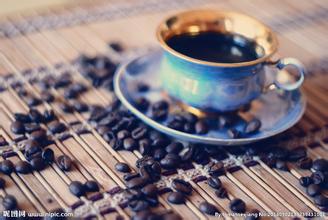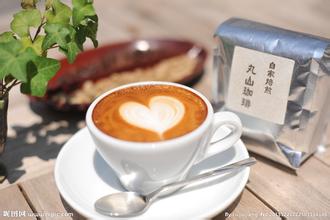Introduction of coffee bean sun washing red honey treatment variety taste manor country
Ye Jia Xuefei coffee beans
We know that the treatment of raw coffee beans can be roughly divided into three types. The distinction between each method is based on the fact that several layers of matter are removed from the fruit before the coffee is dried. The following is a list of the three major processing methods:
11. Natural sun treatment: retain all substances 22. Honey treatment: remove the peel and pulp and retain some or all of the mucous membrane (honey)
(3) washing method: the peel, pulp and mucous membrane were removed by washing and fermentation. This method is also known as the complete washing method (Fully Washed). Shampoo is the most common way for most coffee-producing countries in the world to handle Arabica coffee beans. Some areas also use advanced high-pressure washing machines to clean the peel, pulp and mucous membrane of coffee beans, so fermentation is no longer needed. This method of using a high-pressure washing machine to treat coffee beans is called "natural washing (Pulped Natural)". The treatment is to spread the coffee cherries widely on the exposure field for two weeks and sweep them with a rake several times a day so that the coffee beans can be dried more evenly. When dried, the coffee beans are separated from the skin, and the dried pulp and peel are removed by a sheller, then screened and divided into different grades. However, because the drying method requires good weather and site, some limitations, so rarely completely use the drying method, many places will use the combination of drying method and washing method, known as semi-washing method.
Honey treatment method
The so-called honey treatment (Miel Process in Spanish) is said to refer to the process of making raw beans by sun-drying with mucous membranes. After the outer pulp of the coffee bean is removed, there will be a layer of sticky jelly. The traditional method of washing is to wash it off with clean water, but because of the limitation of water resources in some high-altitude areas, there is this way of direct drying.

Yega Xuefei is a small town in Ethiopia at an altitude of 1700-2100 meters above sea level and is synonymous with Ethiopian boutique beans. It has been a wetland since ancient times in Ethiopia. [Yega] means [settle down]. [Xuefei] means [wetland], so [Yejashafi] means [let's settle down in this wetland]. Most of Yega Xuefei's beans are washed, but there are also a small number of excellent beans that can be treated in the sun. The cost of sun treatment is much higher than that of water washing treatment, because it requires manual timing to turn those red coffee fruits to enhance the attractive fruit aroma and mellowness. Sun drying method uses natural sunlight to dry coffee fruits and raw beans, so it is also called "natural drying method". Due to the use of artificial and natural treatment methods in the process, the sun-cured beans look irregular and unflattering in appearance. 1. Choose beans: put the harvested fruit in the water tank, and the ripe fruit will sink, while the immature and overripe fruit will float up and can be removed. 2. Drying: put the selected ripe fruit in the square for 5-6 days until it is fully dry. At this time, the fruit becomes dark brown, moisture content 13% 3, shelling: the dried peel becomes fragile and easy to fall off, and can be removed by machine. Farms run by enterprises usually have their own shelling factories, while small farms are processed by processing centers.
The sun treatment has a very high requirement on the climate, and if you encounter a rainy day in the sun, it will make the beans moist and moldy. When drying raw beans in the sun, the color is yellow, and the center will be brown after baking, rather than the white of washed beans. Sun beans have relatively better sweetness and mellow thickness, while less sour taste, but the quality is more unstable, there will be greater fluctuations. Due to the low cost of sun treatment, it is widely used not only in Ethiopia and Yemen, but also in Roboste coffee grown in Africa and Indonesia, which is a traditional primary processing method of coffee beans. at present, ancient coffee-growing countries such as Ethiopia and Yemen still almost all use the sun method to treat raw beans.
Sun treatment will first identify sunken beans in the sink, that is, ripe or half-ripe beans are spread in the drying farm for natural drying. The specific time depends on the local climatic conditions, which usually takes two to four weeks. When the moisture of the coffee bean is reduced to 12%, then use the sheller to grind off the hard pulp and silver skin.
Washed coffee accounts for 35% of exports. Good quality washed coffee is processed with freshly picked fully ripe fruit, picked carefully and closely monitored by professionals. The picked clean coffee beans are pulped on the day of picking, then fermented, washed, dried and peeled. The humidity of processed coffee beans is kept at about 12%. The washing rule has a good mellow taste, a high aroma and a lively sour taste.
Important Notice :
前街咖啡 FrontStreet Coffee has moved to new addredd:
FrontStreet Coffee Address: 315,Donghua East Road,GuangZhou
Tel:020 38364473
- Prev

The effect of sun washing on coffee beans what is the difference in flavor?
Coffee washing is also a semi-washing method for the treatment of coffee berries. This method is developed on the basis of washing. The first step is the same as washing. When the fruit turns red, it is picked and put into the pool. The immature fruit floats and the ripe coffee fruit sinks. Remove immature coffee berries in this way. Then use the ripe coffee berries specially
- Next

The best producing area of black caffeine: description of coffee bean flavor, characteristics of grinding degree, introduction to the name of the manor
Coffee at the end of January 2014, with the recovery of international coffee futures prices, the price of coffee in Yunnan also rose rapidly. This past February, international coffee prices rose the most in 20 years, from 114 cents per pound on January 28 to 180 cents per pound on February 28. There are probably three reasons for the rapid rise in coffee prices: first, the world's largest coffee producer.
Related
- Guji coffee producing area of Guji, Ethiopia: Humbela, Shakiso, Wulaga
- What is the most expensive variety of Qiloso in BOP multi-variety group?
- How to store the coffee beans bought home?
- Why are Yemeni coffee beans so rare now?
- Ethiopian Sidamo all Red Fruit Sun Sun Santa Vini Coffee beans
- SOE is mostly sour? What does it mean? Is it a single bean? what's the difference between it and Italian blending?
- Is Italian coffee beans suitable for making hand-brewed coffee?
- How to choose coffee beans when making cold coffee? What kind of coffee beans are suitable for making cold coffee?
- Just entered the pit to make coffee, what kind of coffee beans should be chosen?
- Can only Japan buy real Blue Mountain Coffee? What are authentic Jamaican Blue Mountain coffee beans?

